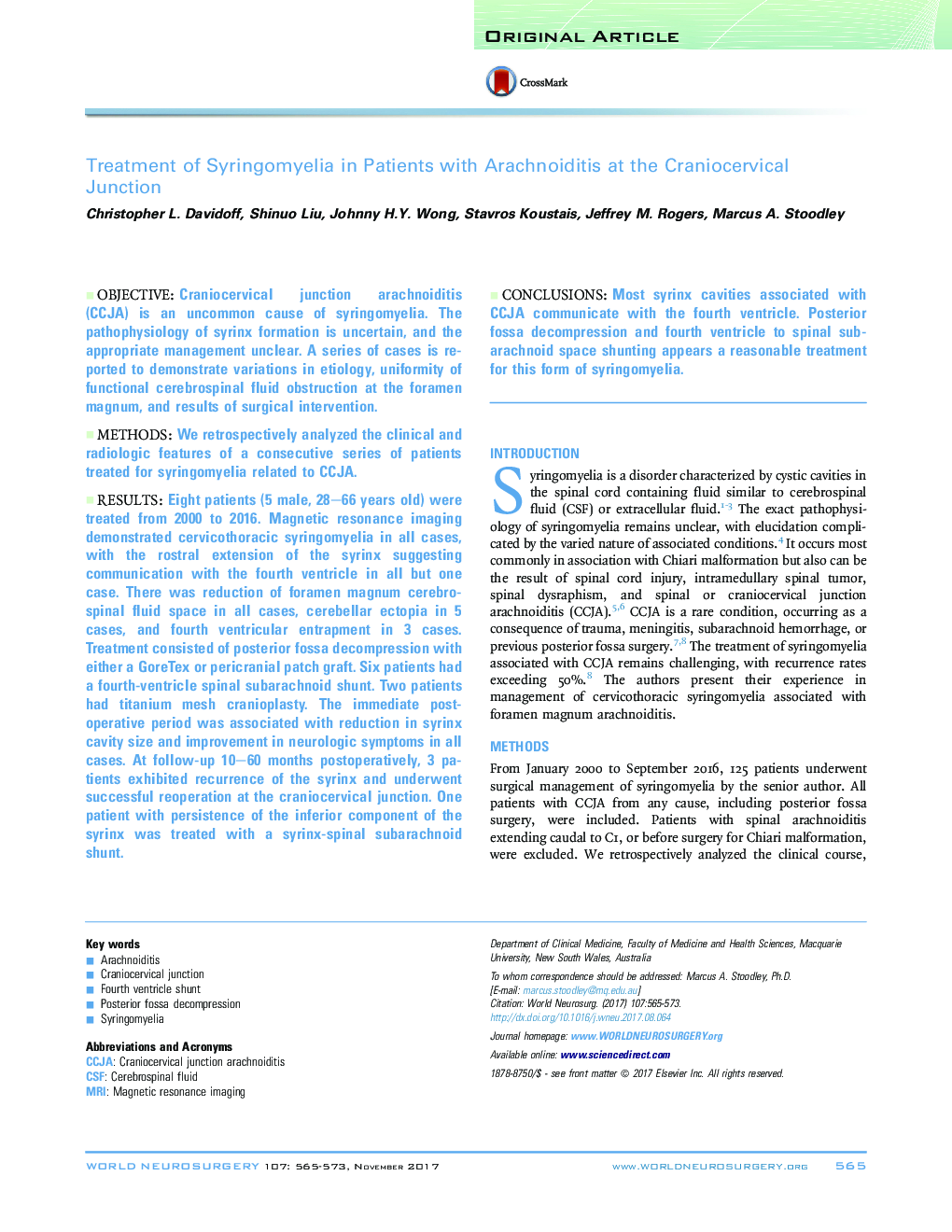| کد مقاله | کد نشریه | سال انتشار | مقاله انگلیسی | نسخه تمام متن |
|---|---|---|---|---|
| 5633920 | 1581448 | 2017 | 9 صفحه PDF | دانلود رایگان |
ObjectiveCraniocervical junction arachnoiditis (CCJA) is an uncommon cause of syringomyelia. The pathophysiology of syrinx formation is uncertain, and the appropriate management unclear. A series of cases is reported to demonstrate variations in etiology, uniformity of functional cerebrospinal fluid obstruction at the foramen magnum, and results of surgical intervention.MethodsWe retrospectively analyzed the clinical and radiologic features of a consecutive series of patients treated for syringomyelia related to CCJA.ResultsEight patients (5 male, 28-66 years old) were treated from 2000 to 2016. Magnetic resonance imaging demonstrated cervicothoracic syringomyelia in all cases, with the rostral extension of the syrinx suggesting communication with the fourth ventricle in all but one case. There was reduction of foramen magnum cerebrospinal fluid space in all cases, cerebellar ectopia in 5 cases, and fourth ventricular entrapment in 3 cases. Treatment consisted of posterior fossa decompression with either a GoreTex or pericranial patch graft. Six patients had a fourth-ventricle spinal subarachnoid shunt. Two patients had titanium mesh cranioplasty. The immediate postoperative period was associated with reduction in syrinx cavity size and improvement in neurologic symptoms in all cases. At follow-up 10-60 months postoperatively, 3 patients exhibited recurrence of the syrinx and underwent successful reoperation at the craniocervical junction. One patient with persistence of the inferior component of the syrinx was treated with a syrinx-spinal subarachnoid shunt.ConclusionsMost syrinx cavities associated with CCJA communicate with the fourth ventricle. Posterior fossa decompression and fourth ventricle to spinal subarachnoid space shunting appears a reasonable treatment for this form of syringomyelia.
Journal: World Neurosurgery - Volume 107, November 2017, Pages 565-573
